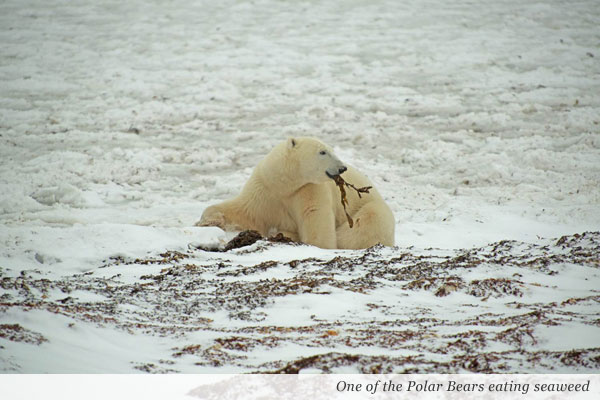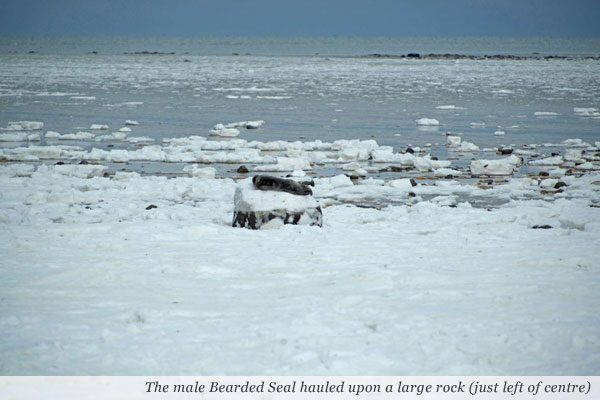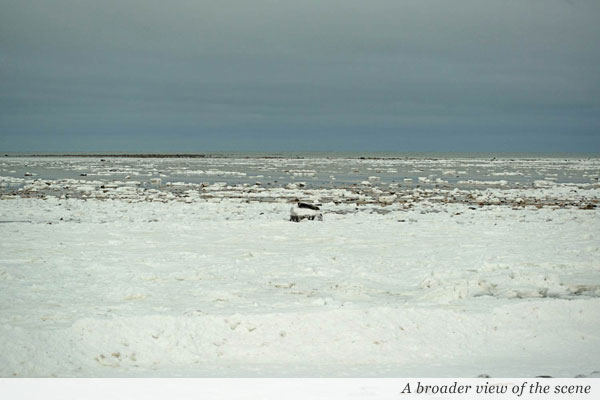
“What could be more interesting than watching these bears?” We all asked and wondered. “You’ll see.” The driver replied.
It took a full ten minutes before we finally saw the
object of interest, a large seal laying atop a big, snow-covered boulder a few dozen
metres from us. Our driver gestured to the other driver by rubbing his beard,
signaling to confirm this was a male Bearded Seal, the largest of the seals
found in Hudson Bay.
 We were impressed, but something was wrong with this
picture. The seal was several hundred feet from the open water of Hudson Bay in
the distance. In between lay with a vast expanse of stones just barely covered with
water and littered with hundreds of ice blocks. It appeared that the seal had
climbed up onto the rock during high tide to rest and then fallen asleep when in
the meantime, the tide had gone out. Seals are poorly equipped to make long
overland treks and therefore he would have to wait for the next high tide in
several hours in order to get back to the sea easily.
We were impressed, but something was wrong with this
picture. The seal was several hundred feet from the open water of Hudson Bay in
the distance. In between lay with a vast expanse of stones just barely covered with
water and littered with hundreds of ice blocks. It appeared that the seal had
climbed up onto the rock during high tide to rest and then fallen asleep when in
the meantime, the tide had gone out. Seals are poorly equipped to make long
overland treks and therefore he would have to wait for the next high tide in
several hours in order to get back to the sea easily.
Due to the openness of the landscape, we could still clearly see in the distance the two bears we had just been watching. Would they smell the seal and track it down? The winds were strong but didn’t seem quite right. We waited and watched with bated breath. Another bear directly downwind might smell the seal, or a closer bear might surreptitiously wander by close enough to see it.
Dusk was imminent as the light was fading and we could wait no longer as we had to return to base camp. We left with the knowledge, uncomfortable as it might have been, that several hours of low tide remained and that the rhythms of nature would take their place in this little piece of wilderness.
For the curious: we received reports that there was no sign whatsoever of the seal the next day, so it likely had escaped detection by the bears to live another day.
Obtain information on this fascinating travel destination, plus view a slideshow of photos taken on previous Quest tours by clicking here.



